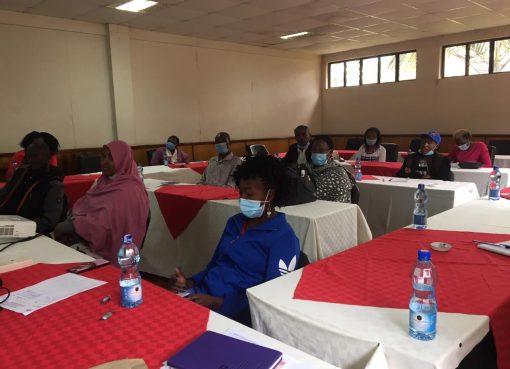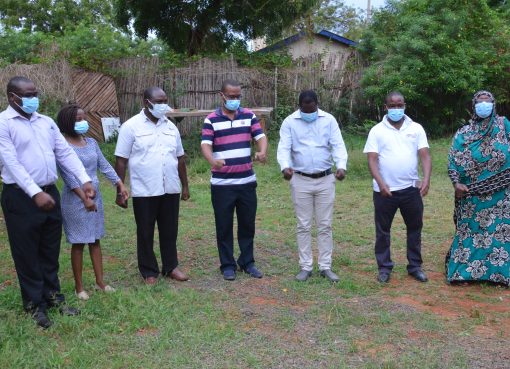Rift Valley Regional Commissioner George Natembeya has maintained that there are no registered government schools in Maasai Mau forest where thousands of people are set to be evicted within the next 60 days.
Natembeya said on Wednesday that though 15 primary schools were constructed within the water tower with public funds, the government does not recognise their existence.
He also announced that the ‘Nyayo Tea Zone’ between Olposimoru forest and Maasai Mau would be removed as it was set up illegally by unscrupulous land prospectors.
“Some of these schools within the Maasai Mau were fraudulently allocated funds meant for public institutions. All the 15 entities not known to the government have corresponding registered schools outside the forest,” noted the RC.
“The funds that were channeled to those public schools by either the State or Constituency Development Fund were deceitfully diverted to put up the so called schools in the forest,” stated the Regional Commissioner.
The administrator, who addressed the media in his office after chairing a closed door meeting with a team tasked to oversee second phase of evictions aimed at ridding Maasai Mau Forest of over 10, 000 illegal settlers, also ruled out compensation for those who would be affected.
The meeting to map out strategies on the second phase of evictions was attended by high ranking officials from the National Police Service, the Kenya Forest Service (KFS), National Security Intelligence Service (NSIS), the Kenya Wildlife Service (KWS), Ministry of Interior and Kenya Water Towers Agency (KWTA).
The second Phase of the Maasai Mau Forest reclamation will cover 17, 101 hectares comprising Kamwengoi, Sierra Leone and Kipchoge that borders Olposimoru forest.
During the first phase of the eviction in July 2018, about 7, 700 people were evicted from the forest land which saw over 12, 000 acres of the forest reclaimed.
“We cannot have a tea zone between two forests. The concept behind the original Nyayo Tea zone was to provide a buffer that would protect forests against human encroachment.
Article 40 (6) of the Constitution provides that protection of right to property does not extend to any property that has been found to have been acquired illegally. Section 61 of the Trust Land Act provides anybody who unlawfully occupies forest land is guilty of an offence,” asserted the administrator.
Earlier this week, Natembeya had indicated that the 15 schools had no teachers deployed by Teachers Service Commission which was an indication that they were not registered and not recognised.
He listed the schools as Keroboni, Senetwet, Kitoben, Lelwett, Indianit, Kabarak, Nosogami, Chorwet and Ogilgei.
Other schools in the forest include Sebetet, Olabai, Koitabai, Chebering, Chebetet and Lelchwett.
He revealed that 712 households within the Maasai Mau were holding title deeds which were irregularly acquired while 4, 531 had unauthenticated sale agreements which were never processed into title deeds. Another 2, 746 do not have documentation.
The RC said there were public schools nearby that will not be affected and parents could take their children there.
The second phase has Nkoben, Ilmotiok and Ololunga on the radar. The others are Enokishomi, Enoosokon,Nkaroni and Sisian.
Last week, the State dealt a blow to opponents of the second phase of evictions when it published in the dailies 1, 274 title deeds in the Mau complex for cancellation.
In June last year, the Ministry of Lands moved to court seeking orders to nullify the titles which were “irregularly and unlawfully issued”.
Prayers were granted two months ago with the court directing the ministry to publish the titles, their owners and the acreage they acquired.
Natembeya said that the team would not be bothered with political noise stating that “We are not here to dance to political and individual whims”.
He also put on notice illegal grazers and settlers within 21 other blocks in the Mau Complex as they would be targeted in the next phase of evictions.
He however said that though security personnel had been deployed on the ground, the evictions would be conducted in a humane manner.
The Mau is the largest water tower in the country supporting millions of human life and wildlife in Kenya and beyond.
On Wednesday, the Kenya Water Towers Agency acting director-general Julius Tanui said his agency had received instructions to prepare to secure the complex.
“We have received instructions to wait. Our main work will be to secure and rehabilitate after evictions. That is where conservation begins,” he said.
On July 25, Tobiko vowed to ensure the evictions go on as planned, saying that no amount of intimidation would stop it.
“Water towers are our lungs and the rivers flowing are our bloodstream. Why would the environment become a political question? It does not know about tribes; the environment does not care,” he said.
In a document titled, ‘Kenya Water Towers Status Report 2018 the government noted that between 1990 and 2016, there was drastic change in the landscape of East Mau.
Within the gazetted forest zone, forestland decreased by about 40 per cent from 54,804 ha in 1990 to 21,740 ha in 2016. Trees were cut down to give way to grazing land, and cultivated crops.
“The threats are mainly caused by rapid population growth which intensifies the pressure on the limited water tower natural resources thereby accelerating their eventual degradation. In addition, there is change in land use and land cover due to cutting of trees for firewood, charcoal, opening land for cultivation, occurrence of forest and bush fires and excision of gazetted forest to create human settlement” states the Kenya Water Towers Status Report 2018 report.
The tower forms the upper catchment for the main rivers in Rift Valley and Western Kenya that include Sondu, Mara, Ewaso Ngiro, Molo, Njoro, Nderit, Makalia and Naishi which feed Lake Victoria, Lake Baringo, Lake Nakuru and Lake Natron. Rivers such as Yala, Nyando Sondu and Nzoia also rise in the Mau.
By Anne Mwale





